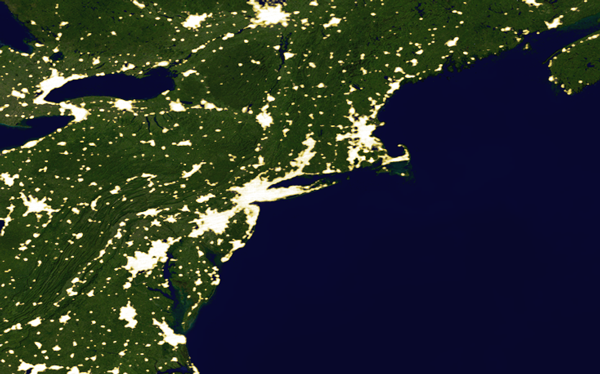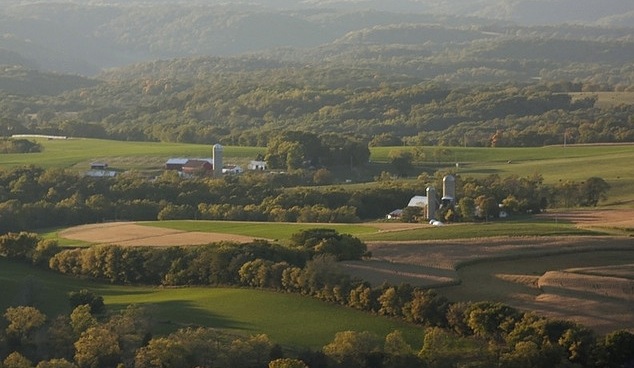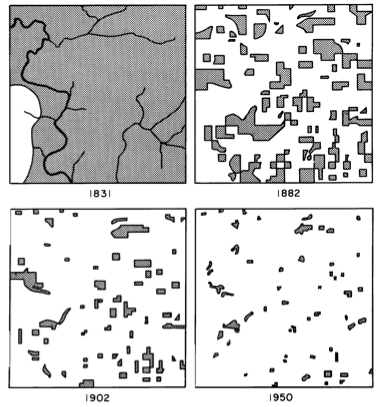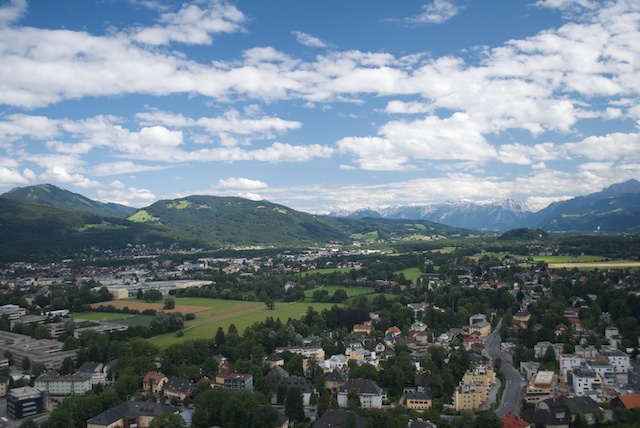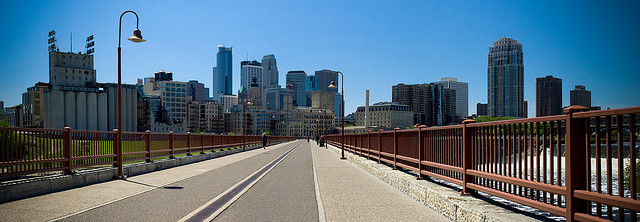
There’s been so much noise made about the resurgence of cities that it’s easy to forget how many are shrinking in population. There’s been a lot of kvetching about what to do as one city loses people to another, or as people move to the suburbs. Detroit has become the poster child of the shrinking cities trend, and its dramatic decline has spooked some people into believing that the taste of many future cities will be laced with a dystopian sourness.
Shrinking cities are nothing new. Many East German cities lost thousands of residents following reunification with West Germany, and Pittsburgh and other American rustbelt cities have been declining for decades. Hell, most of Europe depopulated thanks to the Black Death. And while Detroit may be the most arresting modern example, it is by no means the only one. Still, there may be hope for cities that can’t seem to attract more residents. Two research papers suggest that while growing populations may help cities thrive economically, happiness may not depend on new bodies.
The notion that population growth is necessary to sustain residents’ happiness is a logical one. For one, no one likes being part of a losing team. When more people move out of a neighborhood than in, I’m sure it feels to residents like they’ve placed a bad bet. Also, there’s an economic argument that supports the link between population growth and happiness: With a larger tax base, cities can build more libraries, groom more parks, erect more museums, fill more potholes, and so on.
So it’s somewhat surprising that a new study found population decline can go hand-in-hand with residents’ happiness. The author juxtaposed changes in population with neighborhood satisfaction ratings for 38 major U.S. cities between two time spans, 1994-1998 and 1999-2007. Though some of the cities that shrunk saw their ratings decline (Cleveland, I’m looking at you), so too did a few the cities that grew. In fact, the city that had the worst change in satisfaction ratings (Anaheim) grew by more than 11 percent. Overall, the author did not find a significant difference between growing cities and shrinking cities.
The second study looked at the infamous shrinking East German cities. Seeking better opportunities, many East Germans have flocked to the former West. The author took general standard of living questions and tried to distill the effects of cities’ population trajectories on happiness, especially the differences between cities in the former East and West Germanys. Though Ossis are overall less happy than Wessis, the study found, there was no difference in happiness between growing and shrinking cities within either the East or the West.
Still, I’m not entirely inclined to believe these studies just yet. First, the American study examines a very limited—and oddly defined—period of time. Second, the tests both authors use to determine differences between growing and shrinking cities (a t-test in the American study and probably the same for the German one, though the author does not specify the test in the methods) is far from sophisticated, and a look at the American data tells me it’s probably not the most appropriate one, either. Finally, the use of neighborhood satisfaction in the American survey as a proxy for happiness—while clever—may not adequately capture the effect of city-level landmark institutions, such as San Antonio’s river walk. And the German study’s reliance on more general standard of living questions does not seem to isolate the role cities play in happiness.
There may be some truth to the idea that shrinking cities can contain happy people—after all, growing cities may also be more crowded, which can make people very unhappy—but I’m going to reserve judgement for now.
Sources:
Delken, E. (2007). Happiness in shrinking cities in Germany Journal of Happiness Studies, 9 (2), 213-218 DOI: 10.1007/s10902-007-9046-5
Hollander, J. (2010). Can a City Successfully Shrink? Evidence from Survey Data on Neighborhood Quality Urban Affairs Review, 47 (1), 129-141 DOI: 10.1177/1078087410379099
Photo by jbrownell.
